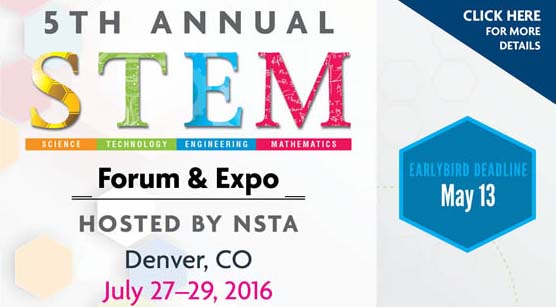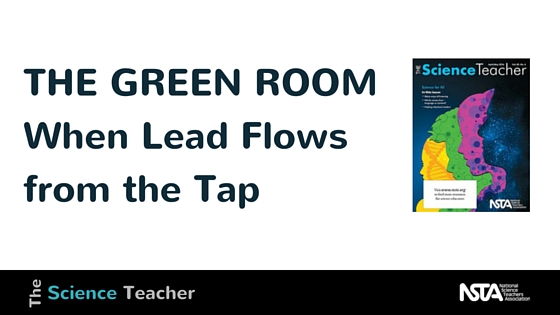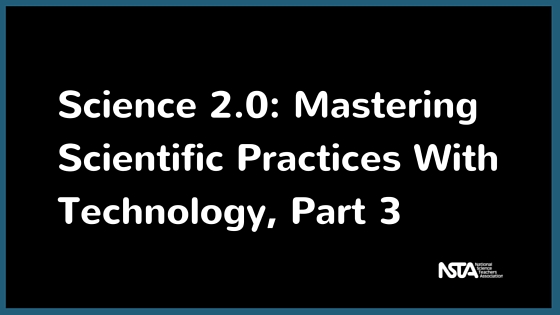Uncover Your Students’ Ideas in Earth and Environmental Science
By Carole Hayward
Posted on 2016-04-22
 The newest book in the NSTA Press best-selling Uncovering Student Ideas in Science series is here!
The newest book in the NSTA Press best-selling Uncovering Student Ideas in Science series is here!
Uncovering Student Ideas in Earth and Environmental Science by Page Keeley and Laura Tucker offers 32 formative assessment probes to get your students digging deep into environmental science concepts.
Find out what your students think and what they misunderstand with these fun and thought-provoking probes.
This is the 10th book in the Uncovering Student Ideas series, and the first one that targets environmental science. Like the other books, this one is designed to help reveal places where students are getting lost.
The book will help to “uncover preconceptions students bring to their learning, as well as identify misunderstandings students develop during instruction that may go unnoticed by teachers,” Keeley and Tucker write.
How do the probes do this? Each probe includes ideas, myths, or bad information that students might believe and one carefully-researched correct answer. Through the process of working through each probe, students will work through any misconceptions they might have.
Intended for students in grades 3–12, the book covers land, water, weather, climate, Earth history, erosion, plate tectonics, natural resources, pollution, and human impact.
In the book’s first lesson, “What’s Beneath Us?” five friends dig in the garden and ponder what the Earth would be like 10 miles below them. Each friend posits a theory of what they would find if they keep digging.
What is down there? Solid rock with a very thin layer of soil on top? Mostly big rocks, small stones, and gravel with a layer of soil on top? Mostly soil with scattered rocks? Big rocks with a little soil on top and in-between? Repeating layers of soil and rock?
The student is asked to decide which of the five gardeners has the best idea. In the teachers’ notes are tips for administering the probe and suggestions for instruction and assessment. These classroom-tested probes relate to core ideas from the American Association for the Advancement of Science’s Benchmarks for Science Literacy and the National Research Council’s A Framework for K–12 Science Education.
The tools are easy to use and effective for instruction. Give one a try. Check out this free chapter, “Groundwater“.
This book is also available as an e-book.
Follow NSTA
Here's Why You Should Attend the 2016 STEM Forum and Expo
By Guest Blogger
Posted on 2016-04-20
As Chair of the 5th Annual STEM Forum & Expo, I invite STEM educators to join me and NSTA in Denver, Colorado from July 27-29, 2016, for a unique PD event that brings together many of the top STEM organizations and makes the teaching of science, technology, engineering, and mathematics (STEM) a priority in today’s classrooms.
 As the need for students to become stronger in STEM grows, so too does the need for well-qualified STEM teachers and administrators who understand what is needed to develop relevant and high-quality STEM programs. The STEM Forum offers opportunities for those involved in the teaching of STEM programs to learn how to effectively integrate various instructional approaches into their teaching and learning environments.
As the need for students to become stronger in STEM grows, so too does the need for well-qualified STEM teachers and administrators who understand what is needed to develop relevant and high-quality STEM programs. The STEM Forum offers opportunities for those involved in the teaching of STEM programs to learn how to effectively integrate various instructional approaches into their teaching and learning environments.
The Forum’s programming is built to assist with the implementation of initiatives and programs that provide specific professional development programs, strategies, and models that will enhance the skills and knowledge of current and future STEM teachers and school leaders in pre-kindergarten through the university level.
Grade-based strands, as well as a strand specifically geared toward administrators, will enable you to easily follow your own interests and interact with colleagues from your particular teaching communities.
The ultimate goal of the Forum is to positively impact overall student performance in the STEM disciplines at all levels of education. Here are some examples of the type of programming opportunities that you will experience:
- Hands-on sessions that enhance ongoing development of teachers and school leaders to improve their STEM knowledge, as well as their pedagogical skills used to import the specialized knowledge/content in each of the STEM disciplines.
- Specialized panels that promote the implementation of teacher and administrator skill and competency development, including data-informed teaching and leading, and the integration of research-based methods into the STEM curriculum.
- Networking opportunities for administrators to improve and enhance competencies attributable to strong STEM leadership, including, but not limited to, supervising and motivating staff, coordination of STEM curriculum, promoting and sustaining a positive school learning climate, and evaluating student performance in the STEM disciplines.
- The forum provides project- and research-based activities that tackle issues of real-world relevance. Our programming is driven by the latest research in subject areas as well as best practices for communicating topics in effective and meaningful ways.
Additional events that will be offered during this 2 1/2 day Forum are:
- An opportunity to hear perspectives from a diverse group of student panelists who have benefited from STEM education and can explain how it has affected their school experiences. These students will also be sharing their aspirations and interests related to STEM opportunities and careers.
- Exhibits that provide tools and resources to further enhance the skills of education.
- Keynote speaker and creator of the YouTube channel Veritasium Derek Muller, Australian-Canadian science communicator, filmmaker, and television presenter.
The programming and events associated with the 5th Annual STEM Forum & Expo will help to ensure successful implementation of STEM education into schools and communities. I hope you and your colleagues will join us. To assist you as you work with your administrator to attend the STEM Forum, we’ve provided a justification letter for this important professional development opportunity. Download it and bring it to your principal if you need help justifying why you should receive support to attend!
Jennifer C. Williams is the Chair of the 2016 STEM Forum and Expo and Department Chair Lower School Science | PAEMST 2006; Isidore Newman School, New Orleans, LA. email Williams at JenniferWilliams@Newmanschool.org.
The mission of NSTA is to promote excellence and innovation in science teaching and learning for all.
Future NSTA Conferences
5th Annual STEM Forum & Expo, hosted by NSTA
- Denver, Colorado: July 27–29
2017 Area Conferences
- Baltimore, Maryland: October 5–7
- Milwaukee, Wisconsin: November 9–11
- New Orleans, Louisiana: November 30–December 2
National Conferences
- Los Angeles, California: March 30–April 2, 2017
- Atlanta, Georgia: March 15–18, 2018
- St. Louis, Missouri: April 11–14, 2019
- Boston, Massachusetts: March 26–29, 2020
- Chicago, Illinois: April 8–11, 2021
Follow NSTA
Sylvia Shugrue award winner 2016
By admin
Posted on 2016-04-20
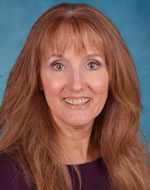 Debra Ericksen, winner of the 2016 Shugrue Award and a science teacher at Adamsville Primary School in Bridgewater, NJ, has developed interdisciplinary, inquiry-based lessons that encourage students to pursue their curiosity about the world.
Debra Ericksen, winner of the 2016 Shugrue Award and a science teacher at Adamsville Primary School in Bridgewater, NJ, has developed interdisciplinary, inquiry-based lessons that encourage students to pursue their curiosity about the world.
Victor Hayek, Superintendent of Schools for Bridgewater-Raritan, says her “lesson plan incorporated NGSS standards and provided enhanced learning opportunities … students [were] engaged and excited throughout the lesson. They had opportunities to apply math skills to their investigations and were able to expand their content knowledge and understanding through rigorous use of informational text, research writing, and presentation of projects.”
As a member of the NGSS Teacher Leader Cohort, Ericksen has facilitated educator workshops that help teachers understand the NGSS and apply interdisciplinary instructional strategies. As a science coordinator, she introduced a new structure for the science fair where scientists and engineers serve as mentors and role models for students.
Candy Mulligan, K–4 Supervisor of Language Arts and Social Studies for Bridgewater-Raritan Schools, says, “What I find most impressive about Debra is the unique way in which she approaches her planning and instruction. She is not one to settle on doing the same thing over and over again. Each new school year Debra first seeks to understand the group of learners she has before her, and then she begins to decide how she can best meet their needs. She always strikes a balance between maintaining the integrity of the district curriculum while not being afraid to take a risk and try a different approach.”
 Debra Ericksen, winner of the 2016 Shugrue Award and a science teacher at Adamsville Primary School in Bridgewater, NJ, has developed interdisciplinary, inquiry-based lessons that encourage students to pursue their curiosity about the world.
Debra Ericksen, winner of the 2016 Shugrue Award and a science teacher at Adamsville Primary School in Bridgewater, NJ, has developed interdisciplinary, inquiry-based lessons that encourage students to pursue their curiosity about the world.
Exemplary science teaching leads to better assessment of student learning
By Robert Yager
Posted on 2016-04-18
Too often science teachers focus on the information included in textbooks and a specific curriculum. But these resources do not include Exemplary Science Teaching. The Next Generation Science Standards (NGSS) continue to focus on conventional ideas and reforms, as well as the Big Ideas. Too little has been focused on strengthening pedagogy and how it improves student learning. The following ten characteristics outline exemplary science teaching and create an atmosphere in which students succeed:
- Work with students to include their interests and ideas.
- Encourage students to work in teams of two to four students to deal with questions.
- Focus on student questions and issues with activities that are local, current, and personal.
- Understand and respond to individual student interests, strengths, experiences, and needs.
- Focus on student understandings and use of information, ideas, and inquiry processes.
- Guide students working in groups with active and extended inquiries.
- Provide opportunities for discussion and debate among students.
- Share responsibilities for learning with students.
- Support classroom communities with cooperation and respect.
- Work with other teachers to enhance the whole school science program.
Robert E. Yager
Professor of Science Education
University of Iowa
Too often science teachers focus on the information included in textbooks and a specific curriculum. But these resources do not include Exemplary Science Teaching. The Next Generation Science Standards (NGSS) continue to focus on conventional ideas and reforms, as well as the Big Ideas. Too little has been focused on strengthening pedagogy and how it improves student learning. The following ten characteristics outline exemplary science teaching and create an atmosphere in which students succeed:
THE GREEN ROOM: When Lead Flows from the Tap
By sstuckey
Posted on 2016-04-16
Making Your Teaching More Environmentally Friendly
Two years ago, the city of Flint, Michigan, began using water from the Flint River. The chemical composition of the Flint River water renders it more corrosive to pipes than the water from Lake Huron, Flint’s former water source. For two years, this corrosive water has been leaching lead from pipes and delivering that lead to faucets in thousands of Flint homes.
Lead is a neurotoxin, or toxic to the central nervous system. It can cause brain damage and affect intelligence, attention, and behavior. Experts say there is no safe level of lead exposure for children due to their rapid brain development. Read more about lead poisoning from the New York Times.
The effects of lead poisoning have been confirmed in Flint. Dr. Mona Hanna-Attisha documented the increased incidences of elevated blood lead levels in children exposed to the city’s contaminated water. Long-term public health initiatives are being established to assist thousands of Flint families who may be dealing with emerging developmental effects for years to come. CNN provided several articles and videos on the Flint water crisis.
Classroom activities
The crisis in Flint is not the first time lead poisoning has made headlines. Concerns about exposure to lead-based paints and leaded gasoline have been widespread since the late 1900s. As a result, numerous related activities and lesson plans are available. The Los Angeles County Department of Public Health developed “Lessons in Lead” for the high school classroom with a focus on methods to prevent lead poisoning in the home. The Centers for Disease Control and Prevention’s (CDC) lesson elucidates the environmental chemistry of lead, including analysis of water, soil, and paint samples from student homes.
As the Flint water crisis continues to unfold, use it to explain lead exposure pathways and toxicity to your students. Lessons can extend far beyond the science classroom.
Amanda Beckrich is the Upper School assistant director, International Baccalaureate (IB) diploma program coordinator, and an environmental science teacher at Christ Church Episcopal School in Greenville, South Carolina.
Editor’s Note
This article was originally published in the April/May 2016 issue of The Science Teacher journal from the National Science Teachers Association (NSTA).
Get Involved With NSTA!
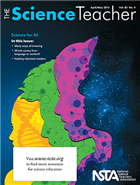 Join NSTA today and receive The Science Teacher, the peer-reviewed journal just for high school teachers; to write for the journal, see our Author Guidelines and Call for Papers; connect on the high school level science teaching list (members can sign up on the list server); or consider joining your peers at future NSTA conferences.
Join NSTA today and receive The Science Teacher, the peer-reviewed journal just for high school teachers; to write for the journal, see our Author Guidelines and Call for Papers; connect on the high school level science teaching list (members can sign up on the list server); or consider joining your peers at future NSTA conferences.
The mission of NSTA is to promote excellence and innovation in science teaching and learning for all.
Future NSTA Conferences
5th Annual STEM Forum & Expo, hosted by NSTA
- Denver, Colorado: July 27–29
2017 Area Conferences
- Baltimore, Maryland: October 5–7
- Milwaukee, Wisconsin: November 9–11
- New Orleans, Louisiana: November 30–December 2
National Conferences
- Los Angeles, California: March 30–April 2, 2017
- Atlanta, Georgia: March 15–18, 2018
- St. Louis, Missouri: April 11–14, 2019
- Boston, Massachusetts: March 26–29, 2020
- Chicago, Illinois: April 8–11, 2021
Follow NSTA
Teach Students Evidence-Based Argumentation
By Carole Hayward
Posted on 2016-04-12
Scientists make arguments and test arguments. They evaluate, analyze, and critique data. Scientists question. They learn from their mistakes. For student scientists, learning how to make and support evidence-based arguments is a critical to their future success.
The Argument-Driven Inquiry (ADI) instructional model focuses on using authentic lab activities that provide students with opportunities to ask questions, define problems, develop models, and analyze and interpret data. Through ADI, students also learn how to give and accept feedback and refine their practices.
Our top-selling series of ADI books in biology, life science, and chemistry walk teachers through the process of using this instructional method to challenge students in grades 6–12. NSTA Press has just released three new lab manuals to accompany the series.
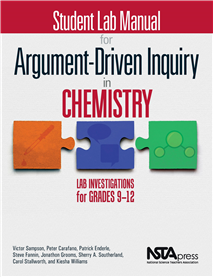 Student Lab Manual for Argument-Driven Inquiry in Chemistry, Lab Investigations for Grades 9–12
Student Lab Manual for Argument-Driven Inquiry in Chemistry, Lab Investigations for Grades 9–12
Authors Victor Sampson, Peter Carafano, Patrick Enderle, Steve Fannin, Jonathon Grooms, Sherry A. Southerland, Carol Stallworth, and Kiesha Williams have included 30 field-tested labs in this manual that cover a range of topics related to chemical reactions and matter’s structure and properties. The investigations offer authentic scientific experiences and provide opportunities for students to think critically, collect and analyze data, generate arguments, and present their findings.
- Check out a sample lab: “Characteristics of Acids and Bases: How Can the Chemical Properties of an Aqueous Solution Be Used to Identify It as an Acid or a Base?”
- Accompanies Argument-Driven Inquiry in Chemistry: Lab Investigations for Grades 9–12
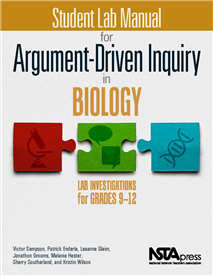 Student Lab Manual for Argument-Driven Inquiry in Biology, Lab Investigations for Grades 9–12
Student Lab Manual for Argument-Driven Inquiry in Biology, Lab Investigations for Grades 9–12
Written by Victor Sampson, Patrick Enderle, Leeanne Gleim, Jonathon Grooms, Melanie Hester, Sherry Southerland, and Kristin Wilson, this manual provides 27 labs that require students to work together as a team to plan and carry out an investigation. These field-tested labs cover molecules and organisms, ecosystems, heredity, and biological evolution for grades 9–12.
- Check out a sample lab: Explanations for Animal Behavior: Why Do Great White Sharks Travel Over Long Distances?
- Accompanies Argument-Driven Inquiry in Biology: Lab Investigations for Grades 9–12
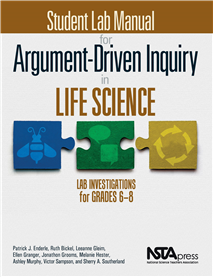 Student Lab Manual for Argument-Driven Inquiry in Life Science, Lab Investigations for Grades 6-8
Student Lab Manual for Argument-Driven Inquiry in Life Science, Lab Investigations for Grades 6-8
Authors Patrick J. Enderle, Ruth Bickel, Leeanne K. Gleim, Ellen Granger, Jonathon Grooms, Melanie Hester, Ashley Murphy, Victor Sampson, and Sherry A. Southerland developed 20 labs that cover molecules and organisms, ecosystems, biological evolution, and heredity for grades 6–8.
To learn more, visit the Argument-Driven Inquiry Series page.
Follow NSTA
Scientists make arguments and test arguments. They evaluate, analyze, and critique data. Scientists question. They learn from their mistakes. For student scientists, learning how to make and support evidence-based arguments is a critical to their future success.
The Argument-Driven Inquiry (ADI) instructional model focuses on using authentic lab activities that provide students with opportunities to ask questions, define problems, develop models, and analyze and interpret data. Through ADI, students also learn how to give and accept feedback and refine their practices.
Science with infants, toddlers and preschoolers
By Peggy Ashbrook
Posted on 2016-04-12
In the March 2016 Rocking and Rolling column in Young Children, “Sharing the Wonder Science With Infants and Toddlers,” Emily J. Adams and Rebecca Parlakian write, “For infants and toddlers, [science] is a process of exploration and discovery.” The column discusses how, through scientifc inquiry, children can develop skills across all domains of development and provides many guidelines for building a culture of science and exploration in your environment.
The NSTA position statement on early childhood science education addresses the preschool years. It affirms that “At an early age, all children have the capacity and propensity to observe, explore, and discover the world around them.” And goes on to say that these basic abilities for science learning “…can and should be encouraged and supported among children in the earliest years of their lives.”
I had the pleasure of hearing just how deep preschooler’s questions can be while observing a teacher reading pages from What Makes a Shadow? by Clyde Robert Bulla with illustrations by June Otani. During the small group reading of the book the teacher asked, “How are the children’s shadows made?” The group responded, “The sunshine!” The children noticed that the children’s shadows did not have eyes or have the other details present in the children’s faces and clothes. Then a child asked, “Could the sun have a shadow?” I think this shows the child understands the sun is an object, not just light, and is thinking about the spatial relationship with the Earth.
The teacher and I looked at each other and she said, “I don’t know. We will have to look that up!”
In the March 2016 Rocking and Rolling column in Young Children, “Sharing the Wonder Science With Infants and Toddlers,” Emily J. Adams and Rebecca Parlakian write, “For infants and toddlers, [science] is a process of exploration and discovery.” The column discusses how, through scientifc inquiry, children can develop skills across all domains of development and provides many guidelines for building a culture of science and exploration in your environment.
Recommendations for Science-Focused Additions to a Middle School Reading List
By Lauren Jonas, NSTA Assistant Executive Director
Posted on 2016-04-11
Question of the Week on the Middle Level List Serve
“I’d really like to encourage my middle school (6-8) students to read more science literature for more robust discussions. In class, I have provided articles and short reading passages from various resources but 40 minutes a class isn’t enough, especially with lectures and labs. I’d like to have them read a science novel, fiction or nonfiction, outside science class. I know that our ELA teacher requires students to complete a certain number of hours for outside reading, and figured I could tag team with him. He’s on board with the idea of adding more science literature to the ELA book list for school and summer reading hours. I would add the titles so that at each grade would have 1 book per semester that we could focus on for science analysis and discussion. One of my limitations is that we don’t have a school library (don’t ask) so I would need titles that students can easily borrow from the public library, or titles that I can obtain in bulk and start a science class library without costing me my first born child. I’m reaching out for title suggestions for middle school (6-8) earth science, life science, and physical science. Right now I only have The Immortal Life of Henrietta Lacks for my life science and Regents Living Environment!”
—Cheska Robinson, @MissCheska, Middle school science teacher in New York
(question shared here with her permission)
Top Answers from NSTA Members
- For environmental science, I suggest Carl Hiaasen’s young adult books: Hoot, Flush, and Scat. They are high interest reading, appropriate for middle school, and well written. It would be especially nice to relate the environmental concerns back to your local issues.
- I enjoyed The Martian by Andy Weir (there’s a language modified school edition that takes out the f-bombs). That has a lot of physics and engineering problem solving (some of it seems plausible to a non-expect reader, but turns out to be fanciful).
- I like The Boy Who Harnessed the Wind. You can check out William Kamkwamba’s true story in three versions – elementary, middle school, and adult versions. He has two or three TED talks. It is wonderful!
- If you think you would get books to use year after year, try a donor’s choose grant to start.
- All of these books would be for life science.
Stiff: Curious Lives of Human Cadavers by Mary Roach (Very humor-filled; She discusses the uses of cadavers and it’s really interesting)
Survival of the Sickest by Dr. Sharon Moalem (Explains the reason why there are certain genetic diseases still in existence in our gene pool and also possibly how they even came about from an evolutionary standpoint.)
Spillover by David Quammen (Discusses all the various types of zoonotic diseases that have spilled over into the human population.)
The Mold in Dr. Florey’s Coat: The Story of the Penicillin Miracle by Eric Lax - I would add to the list:
Something out of Nothing, the Marie Curie Story.
The Secret of the Yellow Death (the story of the cause/cure for Yellow Fever)
Out of the Dust (adolescent story of surviving the dust bowl)
The Great Storm (adolescent story of surviving the Galveston Hurricane of 1900)
There’s a Hair in My Dirt (fun, short book by Gary Larson for environmental education) - I would add Life as We Knew It and House of the Scorpion. The first looks at the changes that occur when the moon is pushed closer to Earth and the second deals indirectly with the ethics of cloning.
What are some of your favorite science-focused books for middle school students? Please share your comments with us.
Join today and receive Science Scope, the peer-reviewed journal just for middle school teachers; connect on the middle level science teaching list (members can sign up on the list server); or consider joining your peers for Meet Me in the Middle Day (MMITM) at the National Conference on Science Education in Los Angeles in the spring of 2017.
The mission of NSTA is to promote excellence and innovation in science teaching and learning for all.
Future NSTA Conferences
5th Annual STEM Forum & Expo, hosted by NSTA
- Denver, Colorado: July 27–29
2017 Area Conferences
- Baltimore, Maryland: October 5–7
- Milwaukee, Wisconsin: November 9–11
- New Orleans, Louisiana: November 30–December 2
National Conferences
- Los Angeles, California: March 30–April 2, 2017
- Atlanta, Georgia: March 15–18, 2018
- St. Louis, Missouri: April 11–14, 2019
- Boston, Massachusetts: March 26–29, 2020
- Chicago, Illinois: April 8–11, 2021
Follow NSTA
Mastering Scientific Practices With Technology, Part 3
By sstuckey
Posted on 2016-04-11
Student use of evidence can sometimes be disconnected from the conclusions students draw from scientific inquiry. As we said last month (see editor’s note, below) when addressing a different practice, the formatting tools found in any word processor can help. Have students underline their scientific claims and boldface their evidence when writing their conclusions. This makes it obvious when claims lack support. Also have students share their evidence-based work in Google Docs (https://docs.google.com), where classmates can add comments and corrections. The student can review the changes that his peers made at the click of a button (https://goo.gl/JaFKBo).
[youtube]https://youtu.be/gbQ7hmwsOL0[/youtube]
As students design and conduct experiments, they will move beyond the procedural steps to focus on how to analyze their findings. We’ve often recommended using graphic organizers to manage the calculations, graphs, and perhaps other forms of evidence. To support this process, teachers can create templates that have color-coded sections for students to document the procedure, analysis, and expected evidence. An open-source tool that offers a platform to help students work through experiments is the Web-based Inquiry Science Environment (WISE) (https://wise.berkeley.edu/). It has tools for drawing, graphing, and concept mapping and offers online discussions with peers and feedback from the teacher.
Culminating the analysis of evidence should be a valid explanation for the observed phenomenon. Students should review each other’s explanations and decide which reaches the most sound conclusion. You can facilitate this with an online gallery walk using Voicethread (http://voicethread.com/). It allows the teacher to upload student work in almost any format—videos, PowerPoint, PDFs, and so on. Students can then review classmates’ work, commenting via text, voice, or video. Another option is to use a voting tool such as StickyMoose (www.stickymoose.com) to help students determine the best explanations.
Obtaining, Evaluating, and Communicating Information
Some argue that communication is the most important skill among the science practices. Students should know how to incorporate graphs, tables, images, text, and equations into a presentation. While PowerPoint or Google Slides remain useful, a more powerful tool, as mentioned last month, is Prezi (https://prezi.com/). It allows the viewer to zoom in and out of different grouping areas, letting students cluster thoughts or main ideas.
 Another way for students to present the “story” of their findings is by creating infographics (see example, at right) with such tools as Easel.ly (www.easel.ly/) or Piktochart (http://piktochart.com). These provide templates to represent patterns, relationships, and evidence in visual ways, stretching students’ thinking by asking them to create a visual display of their quantitative findings.
Another way for students to present the “story” of their findings is by creating infographics (see example, at right) with such tools as Easel.ly (www.easel.ly/) or Piktochart (http://piktochart.com). These provide templates to represent patterns, relationships, and evidence in visual ways, stretching students’ thinking by asking them to create a visual display of their quantitative findings.
Another non-traditional communication tool to show understanding is PowToon (www.powtoon.com). Students can create animated videos featuring embedded graphics or custom student artwork that explains the connections between their evidence and their conclusions. PowToon really taps into the power of audience engagement.
Common to these tools is the ability to communicate findings in non-traditional ways. Students should select the tool themselves, because choosing requires students to evaluate the media elements, presentation style, and mode of communication that best fits the message they want to convey. This is a lifelong skill.
Conclusion
As students learn the vital skills included in the science and engineering practices, we hope teachers will encourage them to take advantage of the tech tools that can enhance their abilities—and their understanding.
Ben Smith (ben@edtechinnovators.com) is a physics teacher in Red Lion, Pennsylvania; and Jared Mader (jared@edtechinnovators.com) is the director of technology for the Lincoln Intermediate Unit in New Oxford, Pennsylvania. They conduct teacher workshops on technology in the classroom nationwide.
Editor’s Note
This is part three in a series of articles focused on using technology to help students master the science practices described in the Next Generation Science Standards. This article focuses on the practice of engaging in argument from evidence and was originally published in April/May 2016 issue of The Science Teacher journal, from the National Science Teachers Association (NSTA).
Join NSTA today and receive The Science Teacher, the peer-reviewed journal just for high school teachers; to write for the journal, see our Author Guidelines and Call for Papers; connect on the high school level science teaching list (members can sign up on the list server); or consider joining your peers at future NSTA conferences.
The mission of NSTA is to promote excellence and innovation in science teaching and learning for all.
Future NSTA Conferences
5th Annual STEM Forum & Expo, hosted by NSTA
- Denver, Colorado: July 27–29
2017 Area Conferences
- Baltimore, Maryland: October 5–7
- Milwaukee, Wisconsin: November 9–11
- New Orleans, Louisiana: November 30–December 2
National Conferences
- Los Angeles, California: March 30–April 2, 2017
- Atlanta, Georgia: March 15–18, 2018
- St. Louis, Missouri: April 11–14, 2019
- Boston, Massachusetts: March 26–29, 2020
- Chicago, Illinois: Apr
il 8–11, 2021
Follow NSTA
Vernier Turns Up The Pressure with the new Pressure Sensor 400
By Martin Horejsi
Posted on 2016-04-06
The new Vernier Pressure Sensor 400 is one small step up in price, but one giant leap in performance. With an exceptional operational temperature range, and secure metal fittings makes the Vernier Pressure Sensor 400 is a serious tool for high school and college experiments in chemistry, biology, physics, and environmental science.
The earlier version of the pressure sensor had a few limitations that kept it from fully supporting the more advanced needs of the science learning community. For one, it was sensitive to certain caustic chemical vapors that could destroy its fragile pressure sensor membrane. And second, it’s range limited it to those pressures between zero and an average car tire.
![]()
The Pressure Sensor 400 has a much more durable membrane, and it has twice the effective range moving from that of a car tire up to a mountain bike tire.

Pressure, or a perpendicular force per unit area is commonly measured in kilo-pascals such as with this sensor. At 400 KPa, the Vernier Pressure Sensor 400 works well within the safety considerations of science teachers.
However, there is a subset of material science that considers pressures of mindboggeling proportion. For instance the current world record for laboratory-created pressure is about 770 Gigapascals (GPa) or about twice that of the pressure you would find at the center of the Earth. And needless to say, things get pretty weird at those pressures such as “interplay” between the core electrons in atoms. For reference, it only takes about 24 GPa to make a diamond, or about 1/32 the pressure of the world record.
High Pressure
Compared to the previous (and still current) pressure sensor, the 400 looks and feels like a tank. The Sherman variety. Wearing two rubber rings for texture, and an overall ergonomic flavor, the 400 feels like a solid tool that will stand up to hard use much better than the plastic box of the general Gas Pressure Sensor. Which is exactly the point. Under some experimental conditions, the previous pressure sensor succumbed to corrosive vapors, and leaks in the seals. As a pressure sensor, the system with under inspection along with the sensor must remain completely closed. Any leakage along the way will produce faulty data.

Been There…almost
The regular Gas Pressure Sensor by Vernier costs about one hundred dollars less than the new Pressure Sensor 400. $106 to be exact. In addition to twice the range, and twice the accuracy, the mechanical upgrades to the Pressure Sensor 400 over the other model include a brass tube connector, a push-to-connect connector made of nickel-plated brass and similar to professional plumbing fixtures, heavier PVC tubing, and included ridged nylon tubing.

And the accessories of a metal wrench to ensure a tight fit, and thread sealing tape made of polytetrafluoroethylene (PTFE) or Teflon™ tape. Some call this white ribbon-like material “Plumber’s Tape” but the usual lexicon for plumbers tape indicates galvanized steel strapping material a few centimeters wide and filled with holes.
 This type of metal plumbers tape is is used to secure pipes and duct work.
This type of metal plumbers tape is is used to secure pipes and duct work.
And there is the heavy duty build quality of the 400.

For comparison, the new 400 sensor measures pressures twice as great as the regular model. But to make the jump up to world record measures of pressure, Vernier would need to up their game and produce a sensor that could handle pressures two million times greater than the current 400 can deal with. And those pressures are most likely outside the safety limits of all classrooms as well as many planets and every comet, asteroid, and moon in the solar system.
Performance Under Pressure
The Pressure Sensor 400 also utilizes a heavy duty PS2 series pressure transducer from Honeywell. Similarly the regular gas pressure sensor uses a Honeywell sensor, but low pressure piezoresistive silicon-ceramic sensor.
The limitations of the lesser sensor is not usually a problem in educational applications where only non-corrosive dry gas pressure is measured, but when the chemistry or biology takes on a more potent smell, a more durable sensor is needed.
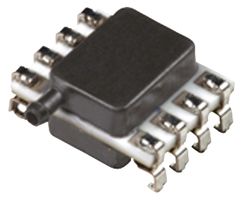
The Pressure Sensor 400’s piezoresistive is contained within a stainless steel housing. The advanced design also provides much more shock and vibration resistance. A added factoid that I found interesting when researching this sensor is that its rated for a minimum of 10 million cycles to operating pressure.
[youtube]https://youtu.be/6wVljKghTO8[/youtube]
Here are three experiments using a pressure sensor and the LabQuest2.
 The increased accuracy of the 400 over other pressure sensors comes in handy when experimenting with subtile pressure changes such as with low-speed measurements of the Bernoulli Principle. For example, at 80 kilometers per hour (~50 miles per hour) the the pressure difference between the relatively still air inside a car with the moving air outside the car window can be measured by taking pressure readings inside and outside the car using a tube connected to the Pressure Sensor 400. The lowest reading was -0.4k
The increased accuracy of the 400 over other pressure sensors comes in handy when experimenting with subtile pressure changes such as with low-speed measurements of the Bernoulli Principle. For example, at 80 kilometers per hour (~50 miles per hour) the the pressure difference between the relatively still air inside a car with the moving air outside the car window can be measured by taking pressure readings inside and outside the car using a tube connected to the Pressure Sensor 400. The lowest reading was -0.4k
Pa. In this inspection, the Pressure Sensor 400 was zeroed inside the car, and then a tube was slipped outside the car through a window and held perpendicular to the car’s direction of travel.

When working with small values, the degree of accuracy of the sensor might also be the limits of the measurable data.
Boyle’s Law is another easy target for the pressure sensor, as is Charles’ Law.

Using the Vernier Go Wireless Link with the Pressure Sensor 400 offers additional freedoms for pressure measurements by reducing the number of digital connections and/or increasing the distance between computer and sensor.

So given the number of creative and innovatively explorative experiments that the regular pressure sensor has generated, the new Vernier Pressure Sensor 400 will again expand the potential for exploring the intriguing world of pressure.
The new Vernier Pressure Sensor 400 is one small step up in price, but one giant leap in performance. With an exceptional operational temperature range, and secure metal fittings makes the Vernier Pressure Sensor 400 is a serious tool for high school and college experiments in chemistry, biology, physics, and environmental science.



